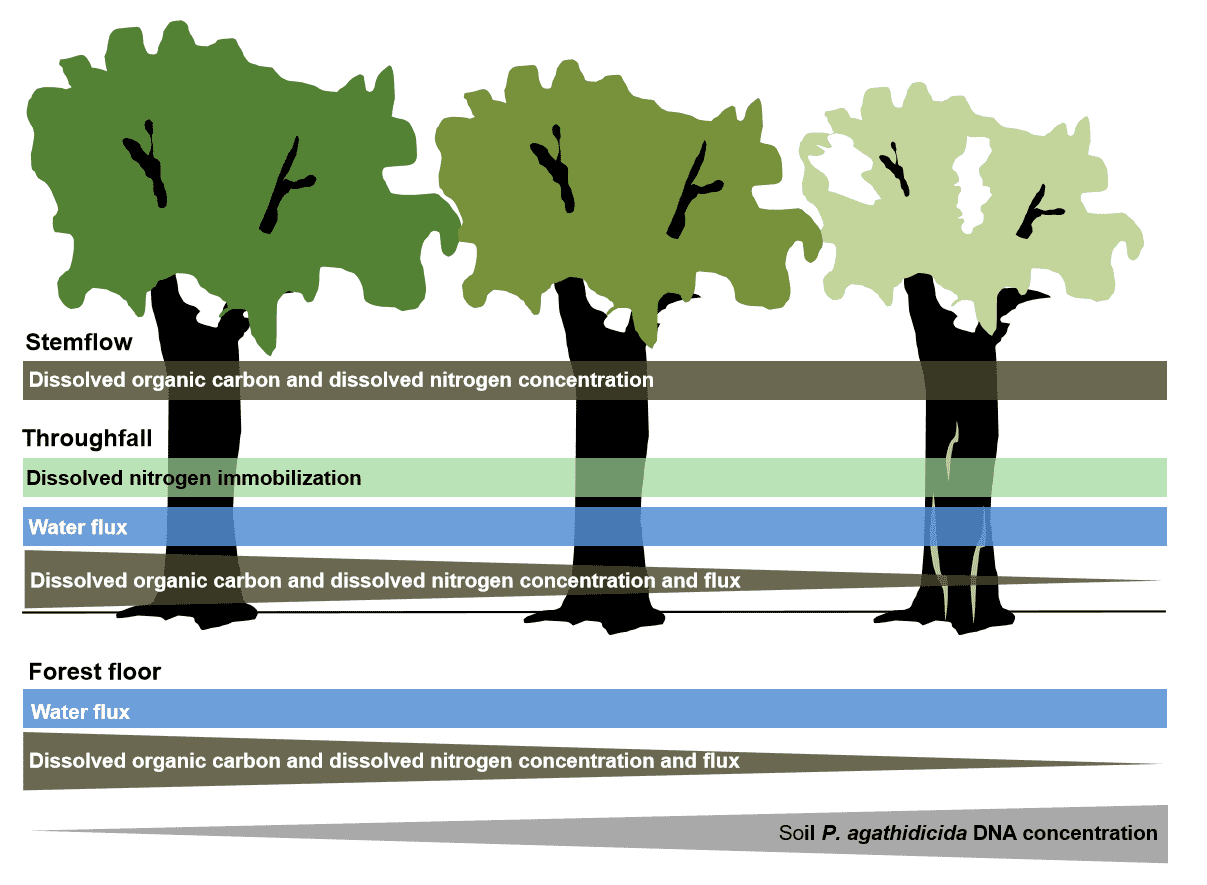
Project lead and Associate Professor Luitgard Schwendenmann (University of Auckland) says the higher the P. agathidicida infection level, the less dissolved organic matter there is in ‘throughfall’ and ‘forest floor leachates’.
Throughfall is the rain water that passes through the canopy and can wash nitrogen, carbon and other particles off tree leaves and onto the forest floor. Forest floor leachates are the compounds filtering through the forest floor into the mineral soil below.
Normally, tree leaves exude small amounts of nitrogen and carbon, which get transported to the forest floor by throughfall. This is a critical step in both nutrient cycles.
But when kauri trees are infected with P. agathidicida, the organism that causes kauri dieback, the leaves yellow and thin out.
Luitgard says “Leaf yellowing and associated changes in leaf chemistry likely decrease the amount of carbon and nitrogen being exuded from the leaves. Leaf thinning would decrease the surface area available for exudates and for rain to pick up dissolved organic matter and transport it to the forest floor.”
A decrease in carbon and nitrogen being transported to the forest floor and soil will affect nutrient cycling, and it might alter the transformation of soil carbon and change the microbial community composition.
“Given that nitrogen appears to be limited in kauri forests, a further reduction in nitrogen input via throughfall and organic layer may lead to problems in kauri nutrition and a further decline in tree health,” she says.
But there is a silver lining.
At the moment there are mainly presence/absence kauri dieback identification methods, which can be restrictive.
In comparison, dissolved organic carbon and nitrogen contained in throughfall and forest floor leachate are easy to collect and analyse. With further research, scientists might be able to use these compounds to assess the severity of kauri dieback, and track how treatments such as phosphide are working.
This study was funded by the University of Auckland (School of Environment PBRF grant) and the University Jena in Germany. The research built upon Donald van der Westhuizen’s MSc research and was supported by the Kauri Dieback Programme (Auckland Council).